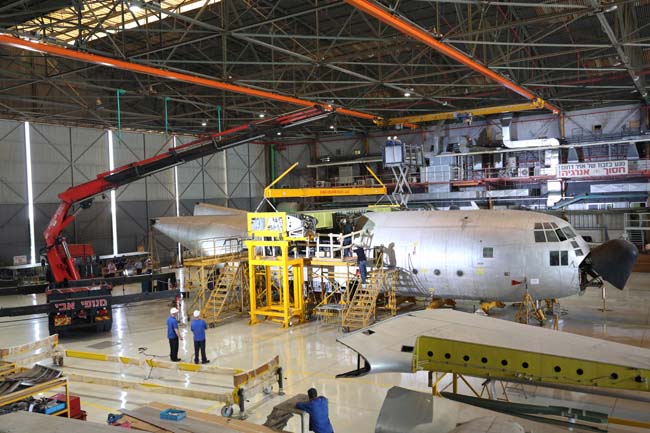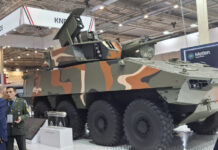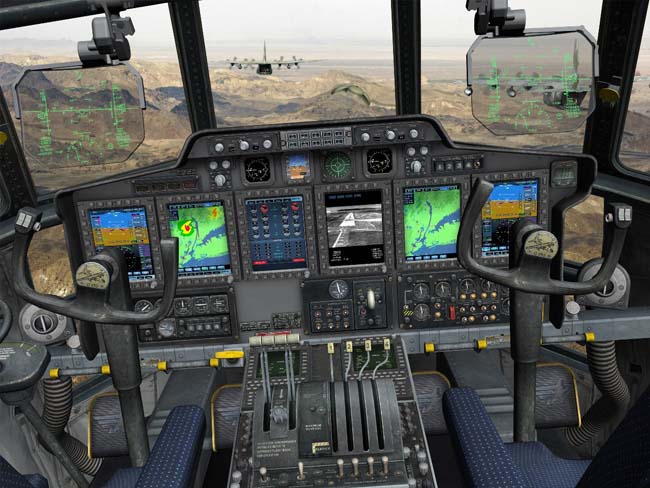

The Israel Air Force has committed to buying at least three new C-130Js; the first will be delivered in 2013. In parallel, extending the life span of the remaining C-130H is becoming critical due to the rapid aging of these aircraft, due to the exhaustive flight profile they endure.
The C-130 is cleared for 45,000 flight hours. Before that limit, the aircraft must go through a comprehensive life extension program replacing the central wing box (CWB), renovating structural elements and renewing wiring. When the budget is available, such work also includes avionic modernization, which could comprise the installation of a modern glass cockpit.
The US Air Force specified a 40,000 threshold Equivalent Baseline flight Hours (EBH) service life, beyond which CWB replacement becomes mandatory Ð an expensive endeavor performed by only a handful of qualified Maintenance, Repair and Overall (MRO) centers around the world. Some operators decide to phase out their older Hercules, sell them on the surplus market or cannibalize them to maintain the remaining, younger fleet.
For most air forces, 40,000 hours are measured in decades. But some would meet this threshold much sooner than others. For air forces that operate their C-130s in combat conditions each flight, hour is multiplied by the EBH factor, determined by the typical mission profile this C-130H flies. Therefore, those airplanes flying more demanding profiles, with the US Air Force Special Operations Command (AFSOC), US Marine Corps or the Israel Air Force, for example, will burn EBH much faster than others, reaching their threshold earlier than the 40,000 goal.
Only a handful of MRO centers have qualified to perform this service worldwide, in the US, Canada, UK, Israel, and Singapore, in anticipation to more air forces reaching the ‘point of no return.’ This extensive and costly process has already been performed on 50 aircraft at Warner Robins Air Logistics Center. Few air forces outside the US have also undertaken the process, among them five in Australia and New Zealand.
With EBH factor twice the US Air Force average, the Israel Air Force is reaching the CWB replacement much earlier than most other air forces. In its current multi-year plan the Israel MOD has allocated budget for the procurement of three C-130Js, setting aside an additional budget for the sustainment and modernization of part of the remaining fleet. The modernization includes the life extension work (airframe, wiring and central wing box replacement) to be performed at IAI and comprehensive avionic modernization provided by Elbit Systems.
Avionics Modernization
Elbit Systems Ltd. announced it had been awarded a contract by the Israel Ministry of Defense (IMOD) to upgrade the Israeli Air Force’s (IAF) C-130H Hercules transport aircraft. The modernization project will extend the operational life of the aircraft and significantly improve its operational capability, particularly in precision flying, low-level night flight and operations in adverse weather. The modernization will contribute to improved flight safety and reduce operating costs, by introducing cutting-edge digital systems to replace obsolete analog systems that have become unreliable and costly to maintain after four decades of intensive service with the IAF.
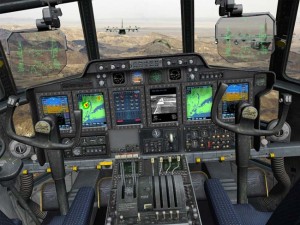
According to Elbit Systems’ Aerospace Division Co-General Manager, Yoram Shmuely, the proposed upgrade utilizes systems, subsystems, and applications being deployed on the most advanced platforms and military and civil upgrade programs to meet current operational needs and enable integration of future operational and technology capabilities.
Key elements of the upgrade are the integration of all-digital avionic architecture, providing the pilot and co-pilot the ability to fly ‘heads up’ or ‘head down,’ in day or night, using EL-OP Head-Up Displays (HUD). The HUDs presents flight data as well as images from the thermal camera, enabling the pilots to fly safely ‘heads up’ at low altitude, in a day, night and under adverse weather conditions. Another improvement is the introduction of Northrop Grumman AN/APN-241 weather/navigation radar replacing the current weather/navigation radar. The AN/APN-241 is the same model used on new C-130J. In addition to its basic functions, it also supports terrain-following flight modes pursued by Elbit Systems and Northrop Grumman under a separate program. Other improvements include the introduction of a new autopilot, providing more reliable and improved automated functions, Engine Indicating and Crew Alerting System (EICAS) and smart panels for the pilots, navigator and flight engineer. Elbit Systems and Northrop Grumman are cooperating on the development of terrain avoidance/terrain following system for the C-130, which is likely to be considered by the IAF once proven in flight demonstrations.
Developed as a modular and integrated flight-deck avionics and mission equipment package (MEP) for transport aircraft, Elbit Systems’ C-Suite architecture integrates all avionics on board. The suite includes a mission computer, head-up displays, enhanced vision system, flight management systems, weather and mapping radar, communications, EO payload, self-protection systems, helmet mounted displays, etc. Integrating this complex array into clearly defined mission situational pictures, relevant to each phase of the mission or task at hand. Delivered as an affordable solution, C-Suite MEP maintains essential flight information visible at all time, enabling the crew to operate the systems intuitively, using six ‘smart panel’ modules.
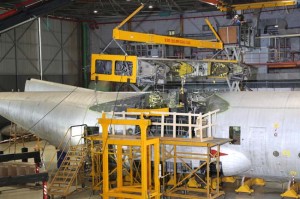
On January 15, 2014, Elbit Systems announced it received a follow-on order from the IMOD worth US$15 million. These upgrades are also compliant with CNS/ATM (Communications Navigation and Surveillance/Air Traffic Management) requirements, enabling military transport planes to fly in international air traffic routes.
Life Extension Program
Airframe and Wing Earlier this year the IAF has allocated the first Hercules to go through the process at IAI. By the summer of 2012, the wing was removed, and a new wing box delivered by Lockheed Martin installed. In parallel, the IAF embarked on a long delayed upgrading and modernization of the remaining fleet of its C-130H. The RFP was distributed to several local companies, including IAI teamed with Astronautics as the avionic provider and Elbit Systems offering its own avionic systems, as part of the modernization. The CWB is expected to become part of this modernization process but not necessarily performed by the same vendor. The IAF provided the first aircraft to IAI to develop the process, and the final decision will be made based on the outcome of the project.
IAI Bedek is offering the CWB replacement as part of a comprehensive upgrade, which also includes Programmed Depot Maintenance (PDM), rewiring and avionic upgrade. The new wing box is cleared for 30,000 hours, extending the life expectancy of the upgraded aircraft for decades.
The avionic upgrade includes a modern glass cockpit with six multifunction panel displays, supporting flight operations and tactical displays, advanced navigation (EGI) and ECAS. According to IAI Bedek, a typical upgrading program including all phases would cost about a third, or even quarter of the cost of a new C-130J, and provide for a transport plane that can remain in useful service for 30,000 hours. The upgraded C-130 is not offered as substitutes for the new C-130Js, but as a complementary solution, sustaining a mixed fleet over a longer transition phase that would meet the air forces budget and operational requirements.
